If you are an avid equestrian you have no doubt heard the words Wobbler being applied to a horse on occasion. In fact our standard vetting will use quite a few of the tests used to denote a horse suffering from Wobbler Syndrome. That said, it is always beneficial to know what to look for if you are buying a new horse for either competition or just happy hacking. Here we outline, what Wobbler Syndrome is, what causes it, the signs and symptoms and the treatment options available.

What is Wobbler Syndrome?
Wobbler Syndrome or Cervical Vertebrae Stenotic (abnormally formed, i.e. a vertebra) Myelopathy (causing damage or compression to the spinal cord) is a disease that affects the cervical spine of the horse, causing ataxia (loss of coordinated control of limb movement) and paresis (i.e. Muscular weakness and with paralysis). Therefore it affects both the Nervous and Musculoskeletal systems of the horse. It is common in fast growing thoroughbreds, but has been found in many other breeds such as Warmbloods and Quarter Horses to name a few. The disease usually presents in an animal anywhere from 6 months to 3 years of age, but has been diagnosed in older animals also. There are 2 main types of the CVSM, one type causes stenosis or narrowing of the spinal canal which leads to compression of the spinal cord producing symptoms regardless of the position of the neck. The second type of CVSM is called dynamic with the mal[1]formed vertebrae causing compression to the spinal cord when the neck is flexed.
Signs & Symptoms of Wobbler Syndrome.
The Signs and Symptoms of the disease can vary a little depending on the severity of the case, but the main symp[1]toms are as follows;
- Loss of coordinated movement of the limbs bilaterally i.e. both sides.
- Muscular weakness, loss of tone, accompanied by paralysis.
- Spasticity of movement, jerky and involuntary move[1]ments.
- Stumbling in front and particularly behind.
- Failure to build up top line.
- Very severe cases will present as a foal, and there will be difficultly walking, the horse almost appearing drunk.
- In a severe case the horse will adopt a wide stance in order to maintain balance, and are very slow to correct limbs that are deliberately placed in unusual positions.
- The animal will find moving on tight circles and also backing very difficult.
- The most severe cases will be unable to stand.
Causes of Wobbler Syndrome.
There is thought to be a genetic component to the disorder, but nothing has been proven yet and further research into this area is warranted. There does however seem to be a gender component to this disease, with males being up to six times more likely to develop CVSM than females, therefore giving an indication that perhaps an imbalance in hormone levels may be a factor. Typically the disease appears to present in a fast growing young horse that is very big for their age, usually with a long neck and fed on a high plain of nutrition. There also appears to be link to other development disorders such as Osteochondrosis and Physitis which affect growth plates. Indeed injury can play a role, for example where a young horse is cast in the stable etc, damaging the neck, leading to abnormal growth. The main thing in the control of the disease especially with young animals is that their nutrition is always balanced to the age and energy requirements of the individual.
Diagnosis of Wobbler Syndrome.
If your horse is suspected to have Wobbler Syndrome, the first thing to do is to schedule an appointment with your Vet. The Vet will discuss the animal’s symptoms with you, making sure all vaccinations are in order, before they car[1]ry out the physical and a neurological examination. The range of tests used will help to determine the severity of the disease.
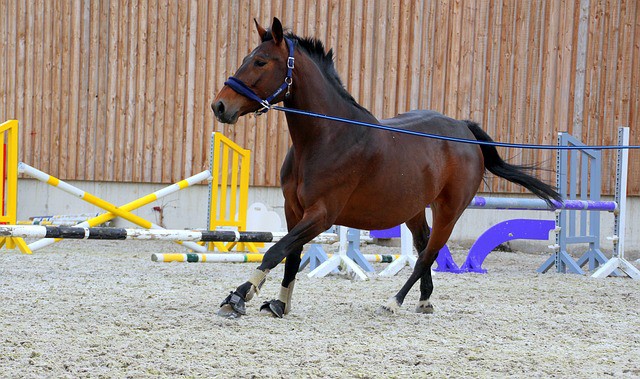
The Vet may also recommend a blood test if the symptoms are acute as there are a few diseases which can affect coordinated movement in the horse and give rise to neurological symptoms, such as Equine Protozoal Myeloencepalitis (usually seen in America) and the Equine Herpes Virus among others.
Depending on his findings he may recommend an X-Ray of the Cervical Spine and or a Myelogram to determine the site of the malformation and to confirm the diagnosis. These types of tests are costly and are carried out under General Anaesthetic and therefore may only be carried out if surgical intervention could be viable treatment option.
Stumbling & A Drunken Gait Are Common Symptoms of Wobbler Syndrome.
Simple Tests For Wobbler Syndrome
However, the following simple tests, along with the animal’s history can help you to confirm if your horse is suffering from Wobblers Syndrome.
- You have noticed your horse has uncoordinated movement of the hind legs particularly, stumbling or dragging toes.
- When turned in a tight circle, the horse will swing the outside hind limbs wide.
- When asked to rein back a horse with WS, will move the front limbs back and then bunny hob the hind limbs backward, instead of moving backwards in diagonal pairs as normal.
- The Limb Place test; the horses limbs are placed crossed i.e. fore over fore, or hind over hind. A normal horse will correct the stance with in a second or 2, however a horse with Wobbler Syndrome will seem happy standing in that position and will be slow to correct their stance.
- The Sway test involves having someone lead the horse in walk while you pull your horses tail from the side as he walks. A normal horse may be caught off guard once, but will quickly be able to right him[1]self, but a horse with Wobbler syndrome can easily be pulled to one side.
- Also the horse’s tail, beware of a horse that has weak tone in this area, if you gently poke the under side of the dock the horse should normally react by clamping the tail down. A horse with weak tone in this area should set alarm bells ringing.
Some Pictures Showing The Simple Tests for Wobbler Syndrome
Turning the Horse on A Small Circle.
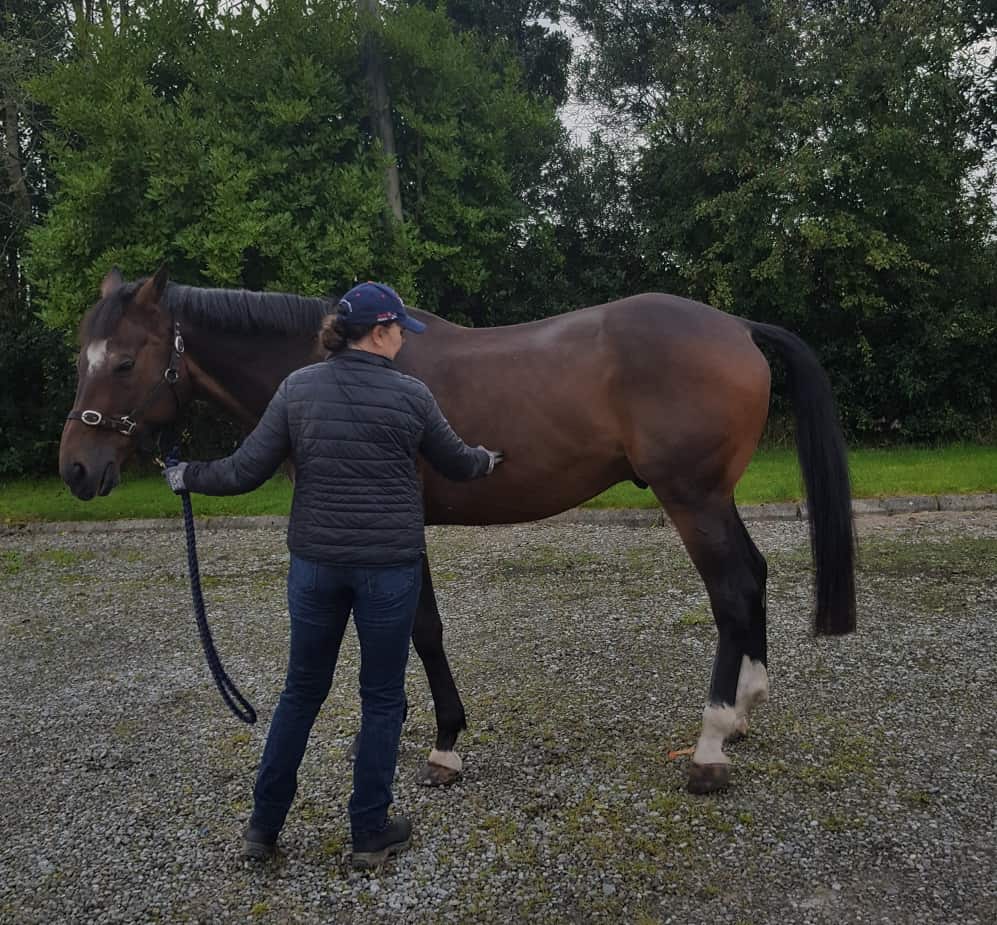
Asking The Horse To Reinback.
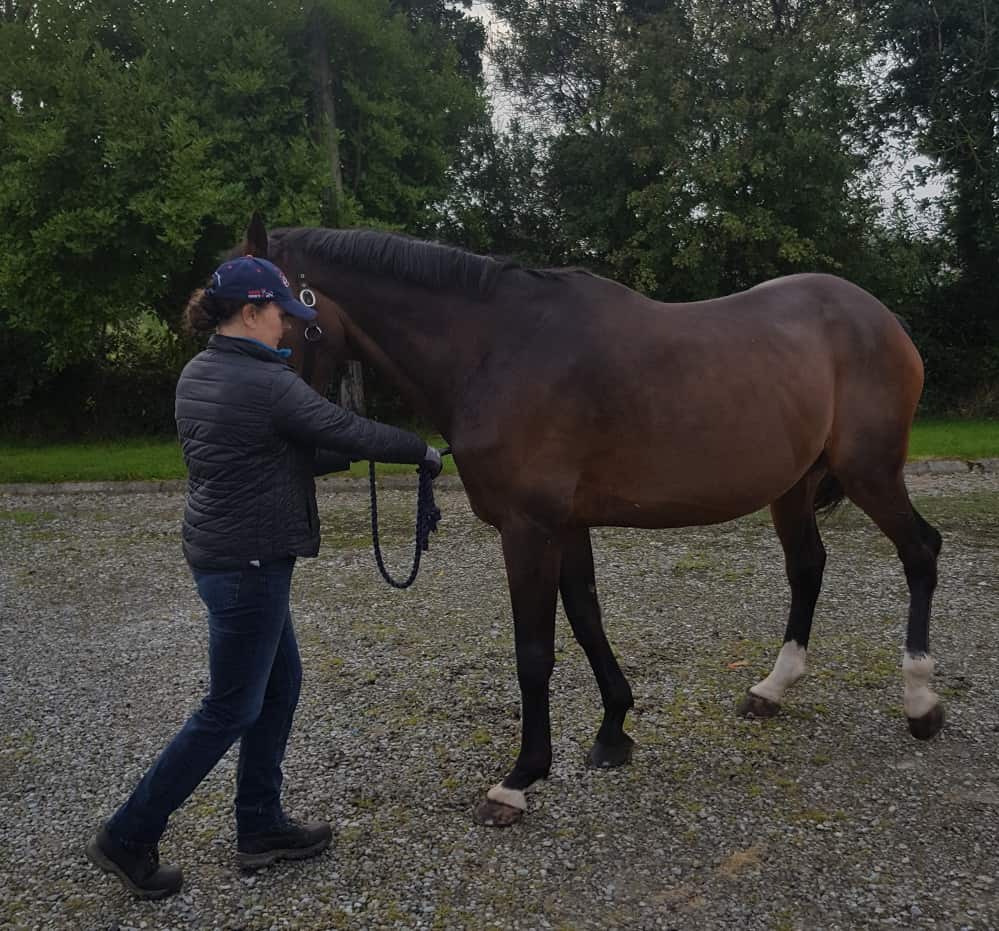
Limb Placement Test.
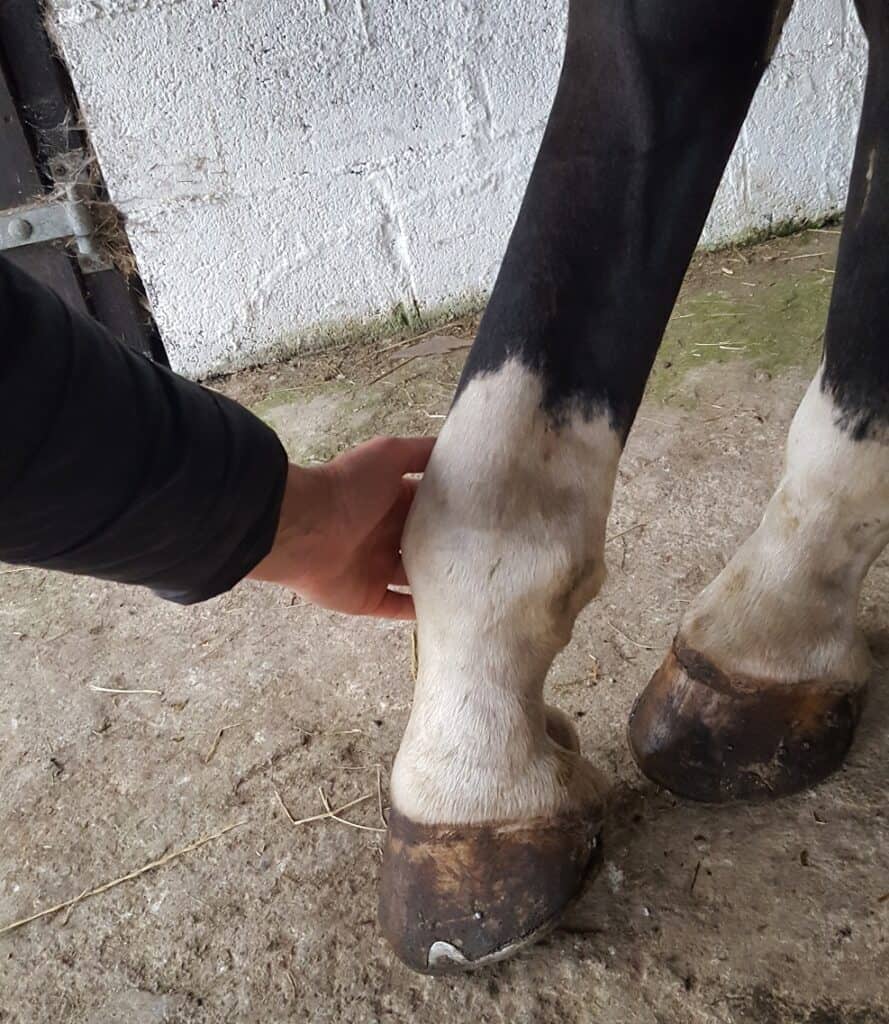
The Tail Clamp Test.
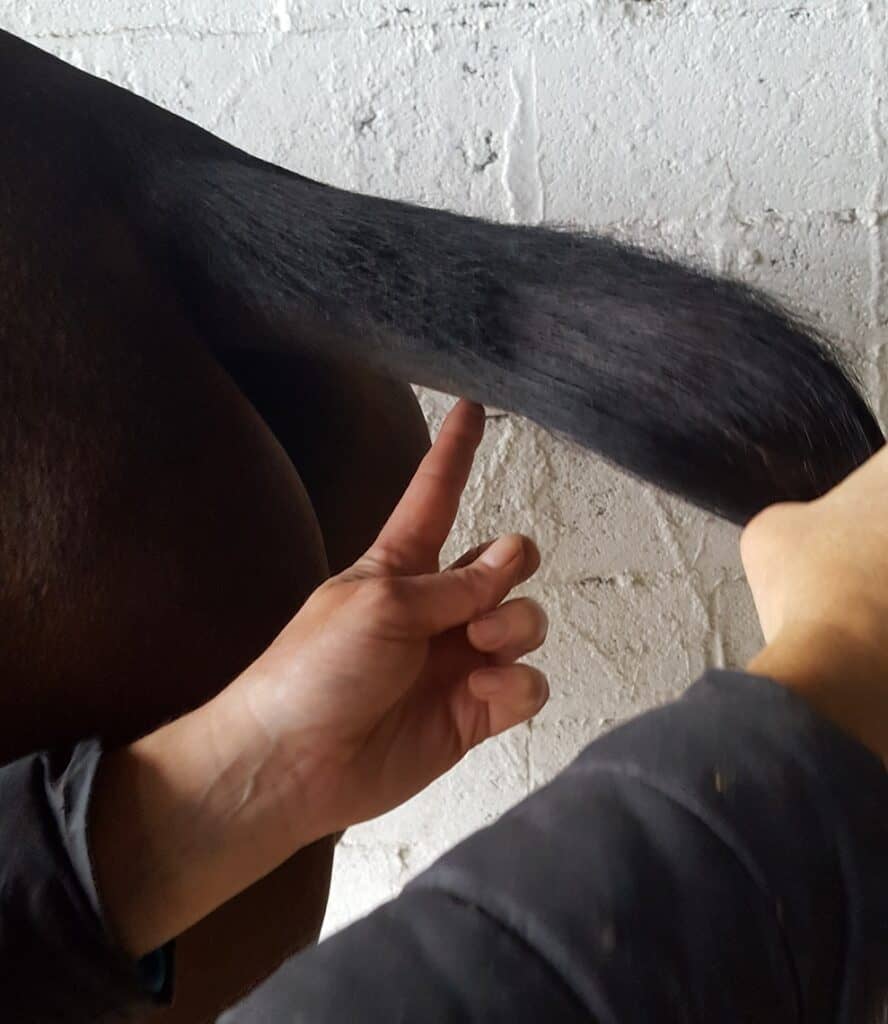
Treatment Options for Wobbler Syndrome
The earlier a diagnosis is made the better chance of a successful treatment with your horse. For a horse presenting with acute symptoms, which are relatively mild, anti-inflammatories can help reduce the swelling and inflammation causing compression on the spinal cord. Treatment using injections of steroids and other medications into problem vertebral joints can aid in the reduction of swelling within the joint and surrounding soft tissues while helping to reduce further bony changes.
Control of diet with a young fast growing horse is important in the control of disease, and it is wise to work closely with your vet to ensure all essential nutrients are maintained, while any protein and carbohydrate is significantly reduced to help to slow the growth spurt. Usually controlled exercise is also recommended to minimise the risk of the animal further injuring itself.
Surgical treatment can be an option for young animals with mild symptoms with only one or two joints affected. The procedure involves stabilising the problem joints using a metal encasement or basket to prevent movement and to allow for correct bone remodelling; however surgery is not an option in severe cases. Although there is a lengthy convalescence following surgery, there have been some encouraging results in mild cases, with up to 80% of horses showing a degree of improvement, while a third are able to return to normal work.
In Conclusion
Wobbler is a serious condition, and requires medical intervention at the earliest onset of symptoms if there is to be any improvement in the symptoms. There are other conditions that can give rise weakness and loss of coordinated movement in your horse, so it is important to have your vet examine your horse as soon as possible.
Wobbler Syndrome adversely affects the ability of your horse to carry a rider and work safely, and therefore it may be necessary to retire the animal as continuing to work a horse that you suspect has this condition is potentially very dangerous for both the rider and the horse.
This Article was originally published in the September 2020 Issue of Irish Sport Horse Magazine, All Pictures of Wobbler Syndrome Simple Tests are the Property of Irish Sport Horse Magazine.
